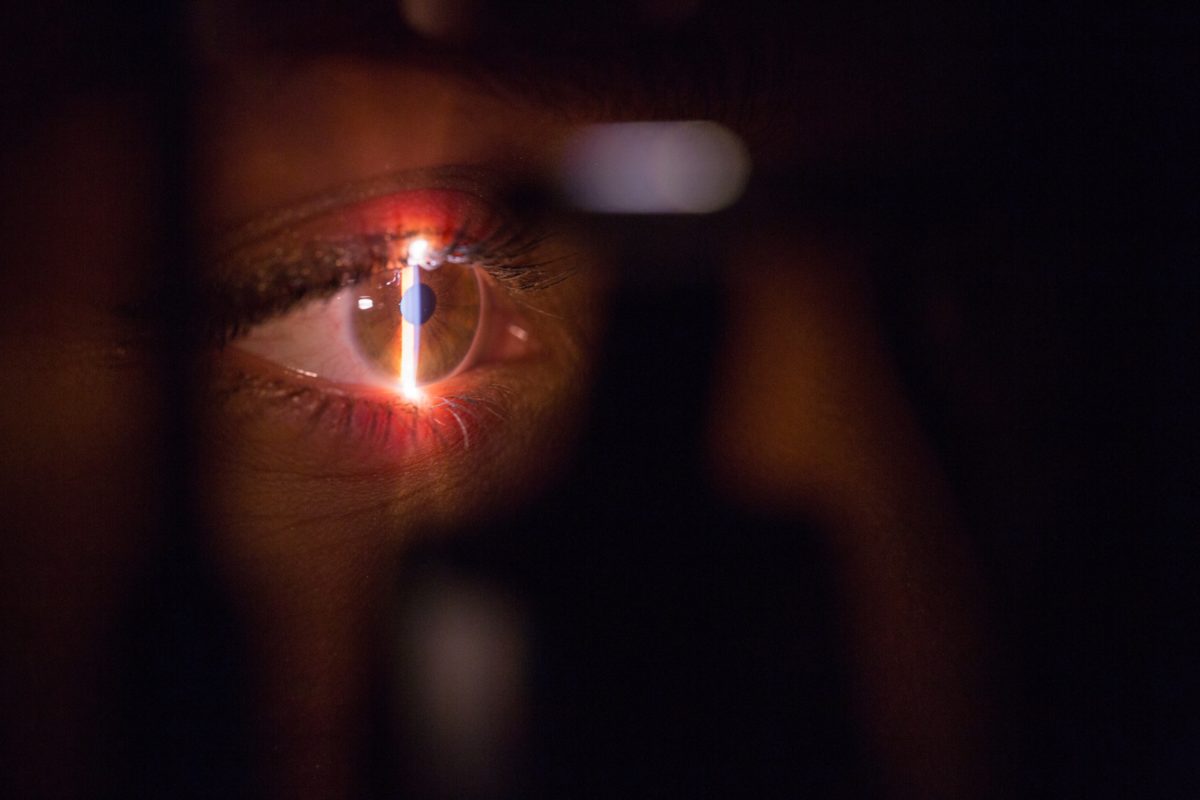
The human body is an incredible machine, full of marvels and mysteries that continue to captivate scientists and researchers. One fascinating aspect of our anatomy is the presence of aqueous humor, a clear fluid that plays a crucial role in maintaining the health and functioning of our eyes. Aqueous humor is found in the anterior chamber of the eye, and it serves multiple purposes, including providing nutrients to the cornea and lens, maintaining intraocular pressure, and aiding in the overall optical system of the eye. In this article, we will delve into the enigmatic world of aqueous humor and uncover 16 intriguing facts about this remarkable fluid. Get ready to deepen your understanding of human anatomy and explore the wonders of the aqueous humor!
Key Takeaways:
- Aqueous humor is a clear fluid in the eye that maintains eye pressure, provides nutrients, and removes waste. Changes in its composition can indicate eye conditions and affect vision.
- The turnover of aqueous humor decreases with age, leading to increased eye pressure and the risk of glaucoma. Medications can help reduce its production to lower intraocular pressure.
Aqueous humor is a clear, watery fluid that fills the anterior chamber of the eye.
Aqueous humor plays a vital role in maintaining the shape of the eye and providing nutrients to the surrounding tissues.
The production and drainage of aqueous humor are carefully regulated to maintain optimal eye pressure.
This balance is crucial for proper vision and preventing conditions such as glaucoma.
Aqueous humor is continuously produced by the ciliary body located behind the iris.
The ciliary body secretes aqueous humor into the posterior chamber, and it then flows into the anterior chamber.
The primary function of aqueous humor is to maintain intraocular pressure (IOP) within a specific range.
High IOP can lead to glaucoma, while low IOP can cause vision problems.
Aqueous humor provides nutrients to the avascular structures of the eye, such as the cornea and lens.
It also helps remove waste products and maintains the overall health of the eye.
The turnover rate of aqueous humor is approximately 1-2% per minute.
This rapid turnover ensures a constant supply of fresh nutrients and removes metabolic waste.
Changes in the composition of aqueous humor can indicate certain eye conditions.
Analysis of its components can help diagnose diseases like uveitis or detect early signs of systemic conditions like diabetes.
Aqueous humor contains substances like ascorbate, glucose, and lactic acid.
These components contribute to the nourishment and maintenance of eye tissues.
The outflow of aqueous humor occurs through different pathways, including the trabecular meshwork and the uveoscleral route.
Disruptions in these drainage pathways can lead to increased eye pressure.
Aqueous humor has a higher concentration of ascorbate (vitamin C) compared to the blood plasma.
This antioxidant property helps protect the delicate structures of the eye from oxidative stress.
Changes in the volume or composition of aqueous humor can affect the refractive properties of the eye.
These changes can lead to temporary fluctuations in vision or the development of conditions like cataracts.
The turnover of aqueous humor decreases with age.
This reduction in turnover rate contributes to the age-related increase in eye pressure and the risk of developing glaucoma.
Certain medications, such as carbonic anhydrase inhibitors, can reduce the production of aqueous humor.
These medications are often prescribed to lower intraocular pressure in glaucoma patients.
Aqueous humor is different from vitreous humor, which is a gel-like substance that fills the posterior chamber of the eye.
While both fluids contribute to maintaining the shape of the eye, they have distinct compositions and functions.
Aqueous humor is constantly circulated and replenished to ensure a stable environment for the delicate structures of the eye.
This circulation helps maintain optimal vision and eye health.
Aqueous humor can be collected for analysis by performing anterior chamber paracentesis or using specialized devices.
These procedures can provide valuable information about the health and integrity of the eye.
Conclusion
Aqueous humor is a fascinating fluid that plays a crucial role in maintaining the health and function of our eyes. From its production in the ciliary body to its circulation and drainage, every aspect of aqueous humor contributes to the overall well-being of our visual system.Through its transparency and unique composition, aqueous humor provides nourishment and oxygen to the cornea and lens, ensuring their proper function. It also helps maintain the shape and intraocular pressure of the eye, safeguarding the delicate structures within. Furthermore, it aids in the removal of metabolic waste products and participates in the immune response, contributing to ocular defense mechanisms.Understanding the enigmatic facts about aqueous humor not only deepens our knowledge of human anatomy but also helps us appreciate the intricate balance required for optimal eye health. So, the next time you blink or shed a tear, remember the remarkable role of aqueous humor in preserving your vision.
FAQs
1. What is aqueous humor?
Aqueous humor is a watery fluid that fills the front portion of the eye, between the cornea and the lens. It is composed of various substances, including water, electrolytes, proteins, and enzymes.
2. How is aqueous humor produced?
Aqueous humor is produced by a structure called the ciliary body, which is located behind the iris. The ciliary body actively secretes the fluid into the posterior chamber of the eye.
3. What is the function of aqueous humor?
Aqueous humor serves multiple functions, including providing nourishment to the cornea and lens, maintaining intraocular pressure, and participating in immune responses and waste removal within the eye.
4. How does aqueous humor circulate within the eye?
Aqueous humor continuously circulates through the anterior chamber of the eye. It flows from the posterior chamber, behind the iris and through the pupil, into the anterior chamber. It then drains out through a network of microscopic channels called the trabecular meshwork, and finally exits the eye via the Schlemm’s canal.
5. What happens if there is an imbalance in aqueous humor production or drainage?
An imbalance in aqueous humor production or drainage can lead to an increase or decrease in intraocular pressure. High intraocular pressure may lead to glaucoma, while low intraocular pressure can affect the overall health and function of the eye.
6. Can we replace or artificially create aqueous humor?
Currently, there are no artificial substitutes for aqueous humor. However, surgical procedures can be done to improve aqueous humor drainage in cases of glaucoma, and medical treatments aim to regulate its production and outflow.
Aqueous humor plays a vital role in maintaining eye health, but many more fascinating aspects of ocular anatomy await your discovery. Delve into the enigmatic world of the ciliary body, a key player in aqueous humor production. Unraveling its secrets will provide a deeper understanding of how our eyes function and stay healthy.
Was this page helpful?
Our commitment to delivering trustworthy and engaging content is at the heart of what we do. Each fact on our site is contributed by real users like you, bringing a wealth of diverse insights and information. To ensure the highest standards of accuracy and reliability, our dedicated editors meticulously review each submission. This process guarantees that the facts we share are not only fascinating but also credible. Trust in our commitment to quality and authenticity as you explore and learn with us.


